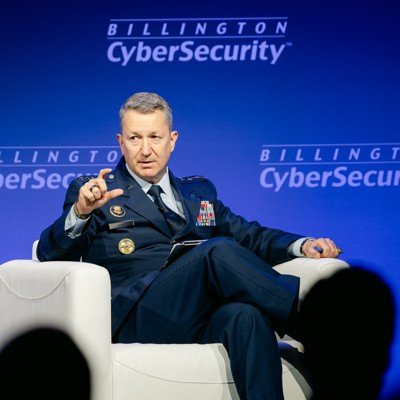AI Research
NASA Partnerships Allow Artificial Intelligence to Predict Solar Events

In the summer of 2024, people across North America were amazed when auroras lit up the night sky across their hometowns, but the same solar activity that makes auroras can cause disruptions to satellites that are essential to systems on Earth. The solution to predicting these solar events and warning satellite operators may come through artificial intelligence.
The Frontier Development Lab of Mountain View, California, is an ongoing partnership between NASA and commercial AI firms to apply advanced machine learning to problems that matter to the agency and beyond. Since 2016, the Frontier Development Lab has applied AI on behalf of NASA in planetary defense, Heliophysics, Earth science, medicine, and lunar exploration.
Through a collaboration with a company called KX Systems, the Frontier Development Lab looked to use proven software in an innovative new way. The company’s flagship data analytics software, called kdb+, is typically used in the financial industry to keep track of rapid shifts in market trends, but the company was exploring how it could be used in space.
Between 2017 and 2019, KX Systems participated in the Frontier Development Lab partnership through NASA’s Ames Research Center in Silicon Valley, California. Working with NASA scientists, KX applied the capabilities of kdb+ to searching for exoplanets and predicting space weather, areas which could be improved with AI models. One question the Frontier Development Lab worked to answer was whether kdb+ could forecast the kind of space weather that creates the auroras to predict when GPS satellites might experience signal interruption due to the Sun.
By importing several datasets monitoring the ionosphere, solar activity, and Earth’s magnetic field, then applying machine learning algorithms to them, the Frontier Development Lab researchers were able to predict disruptive events up to 24 hours in advance.
While this was a scientific application of AI, KX Systems says some of this development work has made it back into its commercial offerings, as there are similarities between AI models developed to find patterns in satellite signal losses and ones that predict maintenance needs for industrial manufacturing equipment.
A division of FD Technologies plc., KX Systems is a technology company that offers database management and analytics software for customers that need to make decisions quickly. While KX started in 1993, its AI-driven business has grown considerably, and the company credits work done with NASA for accelerating some of its capabilities.
From protecting valuable satellites to keeping manufacturing lines moving at top performance, pairing NASA’s expertise with commercial ingenuity is a combination for success.
AI Research
Fight AI-powered cyber attacks with AI tools, intelligence leaders say

Cyber defenders need AI tools to fend off a new generation of AI-powered attacks, the head of the National Geospatial-Intelligence Agency said Wednesday.
“The concept of using AI to combat AI attack or something like that is very real to us. So this, again, is commanders’ business. You need to enable your [chief information security officer] with the tools that he or she needs in order to employ AI to properly handle AI-generated threats,” Vice Adm. Frank Whitworth said at the Billington Cybersecurity Summit Wednesday.
Artificial intelligence has reshaped cyber, making it easier for hackers to manipulate data and craft more convincing fraud campaigns, like phishing emails used in ransomware attacks.
Whitworth spoke a day after Sean Cairncross, the White House’s new national cyber director, called for a “whole-of-nation” approach to ward off foreign-based cyberattacks.
“Engagement and increased involvement with the private sector is necessary for our success,” Cairncross said Tuesday at the event. “I’m committed to marshalling a unified, whole-of-nation approach on this, working in lockstep with our allies who share our commitment to democratic values, privacy and liberty…Together, we’ll explore concepts of operation to enable our extremely capable private sector, from exposing malign actions to shifting adversaries’ risk calculus and bolstering resilience.”
The Pentagon has been incorporating AI, from administrative tasks to combat. The NGA has long used it to spot and predict threats; use of its signature Maven platform has doubled since January and quadrupled since March 2024.
But the agency is also using “good old-fashioned automation” to more quickly make the military’s maps.
“This year, we were able to produce 7,500 maps of the area involving Latin America and a little bit of Central America…that would have been 7.5 years of work, and we did it in 7.5 weeks,” Whitworth said. “Sometimes just good old-fashioned automation, better practices of using automation, it helps you achieve some of the speed, the velocity that we’re looking for.”
The military’s top officer also stressed the importance of using advanced tech to monitor and preempt modern threats.
“There’s always risk of unintended escalation, and that’s what’s so important about using advanced tech tools to understand the environment that we’re operating in and to help leaders see and sense the risk that we’re facing. And there’s really no shortage of those risks right now,” said Gen. Dan Caine, chairman of the Joint Chiefs of Staff, who has an extensive background in irregular warfare and special operations, which can lean heavily on cutting-edge technologies.
“The fight is now centered in many ways around our ability to harvest all of the available information, put it into an appropriate data set, stack stuff on top of it—APIs and others—and end up with a single pane of glass that allows commanders at every echelon…to see that, those data bits at the time and place that we need to to be able to make smart tactical, operational and strategic decisions that will allow us to win and dominate on the battlefields of the future. And so AI is a big part of that,” Caine said.
The Pentagon recently awarded $200 million in AI contracts while the Army doubled down on its partnership with Palantir with a decade-long contract potentially worth $10 billion. The Pentagon has also curbed development of its primary AI platform, Advana, and slashed staff in its chief data and AI office with plans of a reorganization that promises to “accelerate Department-wide AI transformation” and make the Defense Department “an AI-first enterprise.”
AI Research
Study sheds light on hurdles faced in transforming NHS health care with AI

Implementing artificial intelligence (AI) into NHS hospitals is far harder than initially anticipated, with complications around governance, contracts, data collection, harmonization with old IT systems, finding the right AI tools and staff training, finds a major new UK study led by UCL researchers.
Authors of the study, published in eClinicalMedicine, say the findings should provide timely and useful learning for the UK Government, whose recent 10-year NHS plan identifies digital transformation, including AI, as a key platform to improving the service and patient experience.
In 2023, NHS England launched a program to introduce AI to help diagnose chest conditions, including lung cancer, across 66 NHS hospital trusts in England.
The trusts are grouped into 12 imaging diagnostic networks: these hospital networks mean more patients have access to specialist opinions. Key functions of these AI tools included prioritizing critical cases for specialist review and supporting specialists’ decisions by highlighting abnormalities on scans.
The research was conducted by a team from UCL, the Nuffield Trust, and the University of Cambridge, analyzing how procurement and early deployment of the AI tools went. The study is one of the first studies to analyze real-world implementation of AI in health care.
Evidence from previous studies, mostly laboratory-based, suggested that AI might benefit diagnostic services by supporting decisions, improving detection accuracy, reducing errors and easing workforce burdens.
In this UCL-led study, the researchers reviewed how the new diagnostic tools were procured and set up through interviews with hospital staff and AI suppliers, identifying any pitfalls but also any factors that helped smooth the process.
They found that setting up the AI tools took longer than anticipated by the program’s leadership. Contracting took between four and 10 months longer than anticipated and by June 2025, 18 months after contracting was meant to be completed, one-third (23 out of 66) of the hospital trusts were not yet using the tools in clinical practice.
Key challenges included engaging clinical staff with already high workloads in the project, embedding the new technology in aging and varied NHS IT systems across dozens of hospitals and a general lack of understanding, and skepticism, among staff about using AI in health care.
The study also identified important factors which helped embed AI, including national program leadership and local imaging networks sharing resources and expertise, high levels of commitment from hospital staff leading implementation, and dedicated project management.
The researchers concluded that while “AI tools may offer valuable support for diagnostic services, they may not address current health care service pressures as straightforwardly as policymakers may hope” and are recommending that NHS staff are trained in how AI can be used effectively and safely and that dedicated project management is used to implement schemes like this in the future.
First author Dr. Angus Ramsay (UCL Department of Behavioral Science and Health) said, “In July ministers unveiled the Government’s 10-year plan for the NHS, of which a digital transformation is a key platform.
“Our study provides important lessons that should help strengthen future approaches to implementing AI in the NHS.
“We found it took longer to introduce the new AI tools in this program than those leading the program had expected.
“A key problem was that clinical staff were already very busy—finding time to go through the selection process was a challenge, as was supporting integration of AI with local IT systems and obtaining local governance approvals. Services that used dedicated project managers found their support very helpful in implementing changes, but only some services were able to do this.
“Also, a common issue was the novelty of AI, suggesting a need for more guidance and education on AI and its implementation.
“AI tools can offer valuable support for diagnostic services, but they may not address current health care service pressures as simply as policymakers may hope.”
The researchers conducted their evaluation between March and September last year, studying 10 of the participating networks and focusing in depth on six NHS trusts. They interviewed network teams, trust staff and AI suppliers, observed planning, governance and training and analyzed relevant documents.
Some of the imaging networks and many of the hospital trusts within them were new to procuring and working with AI.
The problems involved in setting up the new tools varied—for example, in some cases, those procuring the tools were overwhelmed by a huge amount of very technical information, increasing the likelihood of key details being missed. Consideration should be given to creating a national approved shortlist of potential suppliers to facilitate procurement at local level, the researchers said.
Another problem was initial lack of enthusiasm among some NHS staff for the new technology in this early phase, with some more senior clinical staff raising concerns about the potential impact of AI making decisions without clinical input and on where accountability lay in the event a condition was missed.
The researchers found the training offered to staff did not address these issues sufficiently across the wider workforce—hence their call for early and ongoing training on future projects.
In contrast, however, the study team found the process of procurement was supported by advice from the national team and imaging networks learning from each other.
The researchers also observed high levels of commitment and collaboration between local hospital teams (including clinicians and IT) working with AI supplier teams to progress implementation within hospitals.
Senior author Professor Naomi Fulop (UCL Department of Behavioral Science and Health) said, “In this project, each hospital selected AI tools for different reasons, such as focusing on X-ray or CT scanning, and purposes, such as to prioritize urgent cases for review or to identify potential symptoms.
“The NHS is made up of hundreds of organizations with different clinical requirements and different IT systems and introducing any diagnostic tools that suit multiple hospitals is highly complex. These findings indicate AI might not be the silver bullet some have hoped for but the lessons from this study will help the NHS implement AI tools more effectively.”
While the study has added to the very limited body of evidence on the implementation and use of AI in real-world settings, it focused on procurement and early deployment. The researchers are now studying the use of AI tools following early deployment when they have had a chance to become more embedded.
Further, the researchers did not interview patients and caregivers and are therefore now conducting such interviews to address important gaps in knowledge about patient experiences and perspectives, as well as considerations of equity.
More information:
Procurement and early deployment of artificial intelligence tools for chest diagnostics in NHS services in England: A rapid, mixed method evaluation, eClinicalMedicine (2025). DOI: 10.1016/j.eclinm.2025.103481
Citation:
Study sheds light on hurdles faced in transforming NHS health care with AI (2025, September 10)
retrieved 10 September 2025
from https://medicalxpress.com/news/2025-09-hurdles-nhs-health-ai.html
This document is subject to copyright. Apart from any fair dealing for the purpose of private study or research, no
part may be reproduced without the written permission. The content is provided for information purposes only.
AI Research
‘The New Age of Sexism’ explores how misogyny is replicated in AI and emerging tech

Artificial intelligence and emerging technologies are already reshaping the world around us. But how are age-old inequalities showing up in this new digital frontier? In “The New Age of Sexism,” author and feminist activist Laura Bates explores the biases now being replicated everywhere from ChatGPT to the Metaverse. Amna Nawaz sat down with Bates to discuss more.
-

 Business2 weeks ago
Business2 weeks agoThe Guardian view on Trump and the Fed: independence is no substitute for accountability | Editorial
-
Tools & Platforms4 weeks ago
Building Trust in Military AI Starts with Opening the Black Box – War on the Rocks
-

 Ethics & Policy2 months ago
Ethics & Policy2 months agoSDAIA Supports Saudi Arabia’s Leadership in Shaping Global AI Ethics, Policy, and Research – وكالة الأنباء السعودية
-

 Events & Conferences4 months ago
Events & Conferences4 months agoJourney to 1000 models: Scaling Instagram’s recommendation system
-

 Jobs & Careers2 months ago
Jobs & Careers2 months agoMumbai-based Perplexity Alternative Has 60k+ Users Without Funding
-

 Education2 months ago
Education2 months agoVEX Robotics launches AI-powered classroom robotics system
-

 Podcasts & Talks2 months ago
Podcasts & Talks2 months agoHappy 4th of July! 🎆 Made with Veo 3 in Gemini
-

 Education2 months ago
Education2 months agoMacron says UK and France have duty to tackle illegal migration ‘with humanity, solidarity and firmness’ – UK politics live | Politics
-

 Funding & Business2 months ago
Funding & Business2 months agoKayak and Expedia race to build AI travel agents that turn social posts into itineraries
-

 Podcasts & Talks2 months ago
Podcasts & Talks2 months agoOpenAI 🤝 @teamganassi

